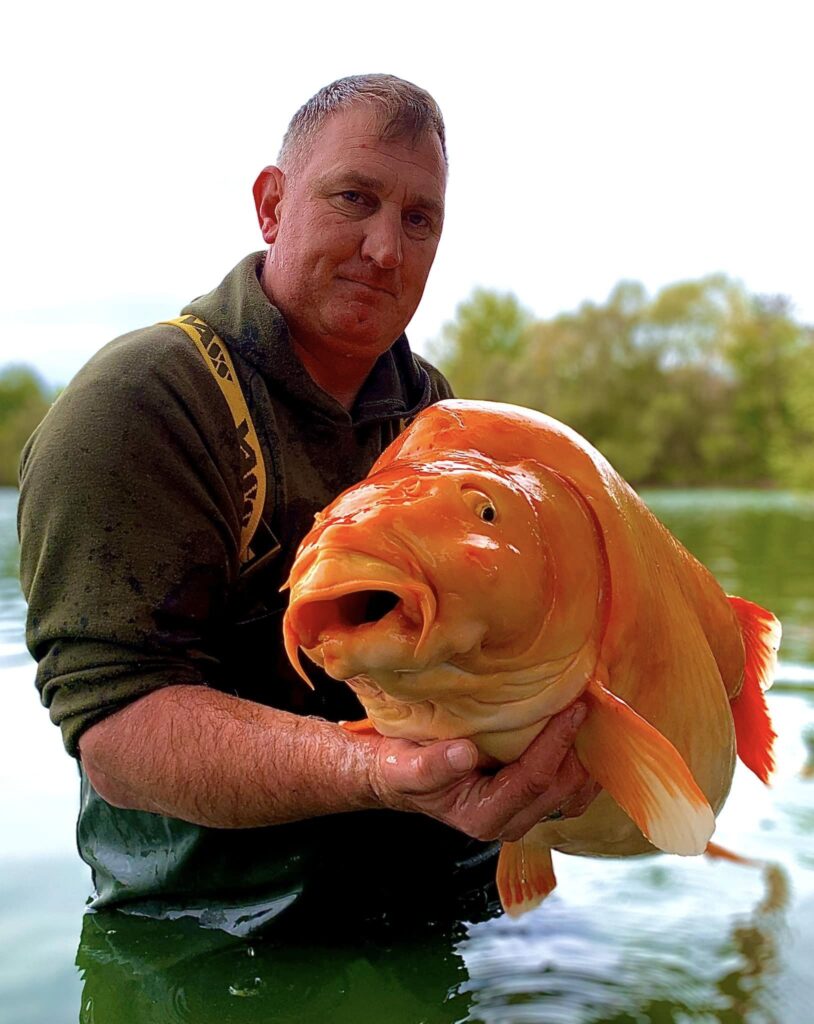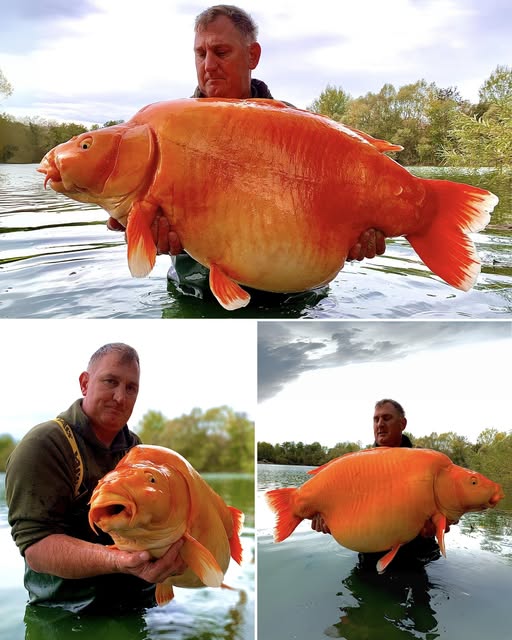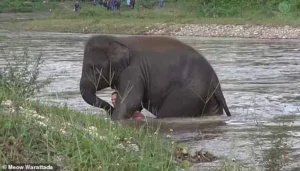Goldfish are often seen as small, harmless pets confined to fish bowls or small tanks. However, some goldfish, when placed in the right environment, can grow to astonishing sizes, causing significant ecological damage. One such example is a massive goldfish hybrid named “The Carrot,” which made headlines for its shocking weight and size. This serves as a crucial reminder not to release pets, particularly goldfish, into the wild. This behavior leads to large, invasive species that disrupt ecosystems, often causing long-term environmental harm.
The Story of The Carrot: A 67-Pound Goldfish Hybrid
In Champagne, France, an angler named Andy Hackett recently made an extraordinary catch at BlueWater Lakes. He reeled in a goldfish hybrid weighing an astonishing 30 kilograms, or roughly 67 pounds, known as The Carrot. Originally released into the carp fishery over 20 years ago, The Carrot is now considered one of the largest goldfish hybrids globally. After a 25-minute struggle, Hackett successfully landed the enormous fish, took a few photos, and released it back into the water, ensuring it would continue to live and thrive in its environment.
Goldfish, typically a species of domesticated carp, come in various breeds. They are known for their hardiness and ability to adapt to different environments. In some cases, goldfish even hybridize with koi, resulting in unique and often larger fish. The Carrot’s hybrid nature allowed it to grow to an unprecedented size, serving as a wake-up call about the dangers of pet dumping.
The Dangers of Pet Dumping: How Goldfish Become Invasive Species
Goldfish, when released into the wild, can grow to unexpected sizes due to their adaptability. While they may start as small, bowl-dwelling pets, they can thrive in larger bodies of water where food is abundant. In these environments, goldfish can reach lengths of over a foot, and when hybridized, they may grow even larger.
This natural growth can disrupt local ecosystems. Goldfish, like The Carrot, are opportunistic feeders, meaning they will consume whatever food is available. In doing so, they can outcompete native species for resources, upsetting the delicate balance of ecosystems. Their aggressive feeding habits can damage silt beds, uproot aquatic plants, and contribute to the overall degradation of water quality.
In parts of the United States, giant goldfish have already become a major environmental concern. They are capable of displacing native species and spreading parasites, which can harm local wildlife. The release of pet goldfish into natural waterways is, in fact, illegal in the U.S., as it can lead to the spread of invasive species and ecological damage.
Why Do Goldfish Grow So Large?
Goldfish grow larger in environments where they have access to ample food and space. In smaller tanks or bowls, goldfish are constrained by their limited resources, which restricts their growth. However, when placed in larger bodies of water with abundant food, they can grow at a much faster rate, sometimes reaching sizes similar to The Carrot.
The story of The Carrot is not unique. Many pet owners unknowingly contribute to the problem by releasing their unwanted pets into natural water systems. In some cases, pet owners may not realize the long-term consequences of this action. It is essential to remember that goldfish, like all pets, require responsible care and should not be abandoned.
 Photo: Bluewater Lakes
Photo: Bluewater Lakes
Legal and Responsible Ways to Handle Unwanted Pets
In the United States, the release of goldfish and other pets into natural waterways is prohibited by law. The U.S. Fish and Wildlife Service provides guidance on how to properly dispose of unwanted pets. Instead of releasing them into the wild, pet owners can contact local animal shelters or pet rescue organizations to find a responsible solution.
Moreover, it is important for pet owners to understand that goldfish are not the only species that can cause harm if released into the wild. Other pets, including cats, dogs, and exotic animals, can also become invasive species if left to roam freely. Therefore, it is crucial to practice responsible pet ownership and avoid contributing to the problem of pet dumping.
The Importance of Education and Awareness
Educating the public about the dangers of releasing pets into the wild is critical. By raising awareness about the impact of pet dumping on local ecosystems, we can help prevent further environmental damage. Schools, community organizations, and animal welfare groups all play a vital role in spreading this message.
Pet owners must also be aware of the needs of their pets. If a pet becomes too large or difficult to care for, there are always responsible alternatives to releasing them into the wild. In some cases, pet owners may want to consider donating their pet to a rescue organization, transferring it to a larger tank, or finding a new home for it. By doing so, they can ensure that the pet is cared for properly while also protecting the environment.
Conclusion: Protecting Ecosystems and Pets
The story of The Carrot serves as a powerful reminder of the dangers of pet dumping. Goldfish, when placed in the right environment, can grow to enormous sizes, causing significant ecological disruption. Pet owners must take responsibility for their pets and avoid releasing them into the wild.
By practicing responsible pet ownership, we can protect both our pets and the ecosystems around us. If you are unsure about what to do with an unwanted pet, contact a local animal shelter or organization for guidance. It’s crucial to make the right choice to ensure the well-being of both your pet and the environment.
For more related stories, check out the full articles here:
- Man Loses 360 Pounds Naturally: Internet Rallies to Support His Next Step
- Tammy Hembrow’s Bikini Photos Are Stirring Controversy: Here’s Why Everyone’s Talking
Keywords: Insurance, Loans, Mortgage, Credit, Lawyer, Donate, Recovery, Gas/Electricity, Treatment, Rehab, Classes.


